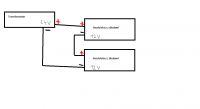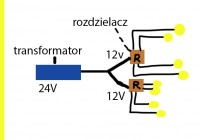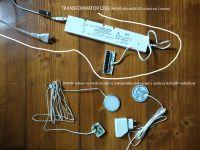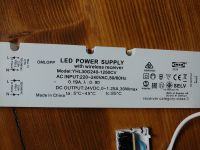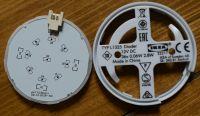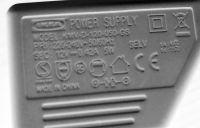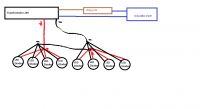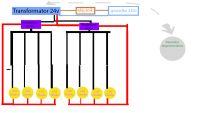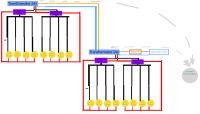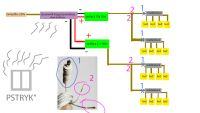Hello, this is my first post on the forum, thank you in advance for your answers.
The case looks like this
I bought a transformer from Ikea ANSLUTA and 2x Dioder included 4 led lights
I can't post links so I give Google phrases
google ANSULA IKEA
google: IKEA DIODER
- ANSLUTA
Power: 30 Watt
ac input: 220-240VAC 50 / 60Hz
0.19
DC output 24VDC 1-1.25a
- DIODER with 4 led lights.
one lamp says:
12v DC
36x0.06w 2.8W
on the power supply from DIODER led lights
220-240V 50 / 60Hz
12V- 0.42A 5W
Diode connection diagram is
power supply-distributor-led
I have a question, is it possible to connect an ANSLUTA 24V transformer and connect up to 2 DIODER distributors so that each of them has 12V?
Something like Ansula - Dioder - led splitter.
best regards
The case looks like this
I bought a transformer from Ikea ANSLUTA and 2x Dioder included 4 led lights
I can't post links so I give Google phrases
google ANSULA IKEA
google: IKEA DIODER
- ANSLUTA
Power: 30 Watt
ac input: 220-240VAC 50 / 60Hz
0.19
DC output 24VDC 1-1.25a
- DIODER with 4 led lights.
one lamp says:
12v DC
36x0.06w 2.8W
on the power supply from DIODER led lights
220-240V 50 / 60Hz
12V- 0.42A 5W
Diode connection diagram is
power supply-distributor-led
I have a question, is it possible to connect an ANSLUTA 24V transformer and connect up to 2 DIODER distributors so that each of them has 12V?
Something like Ansula - Dioder - led splitter.
best regards



